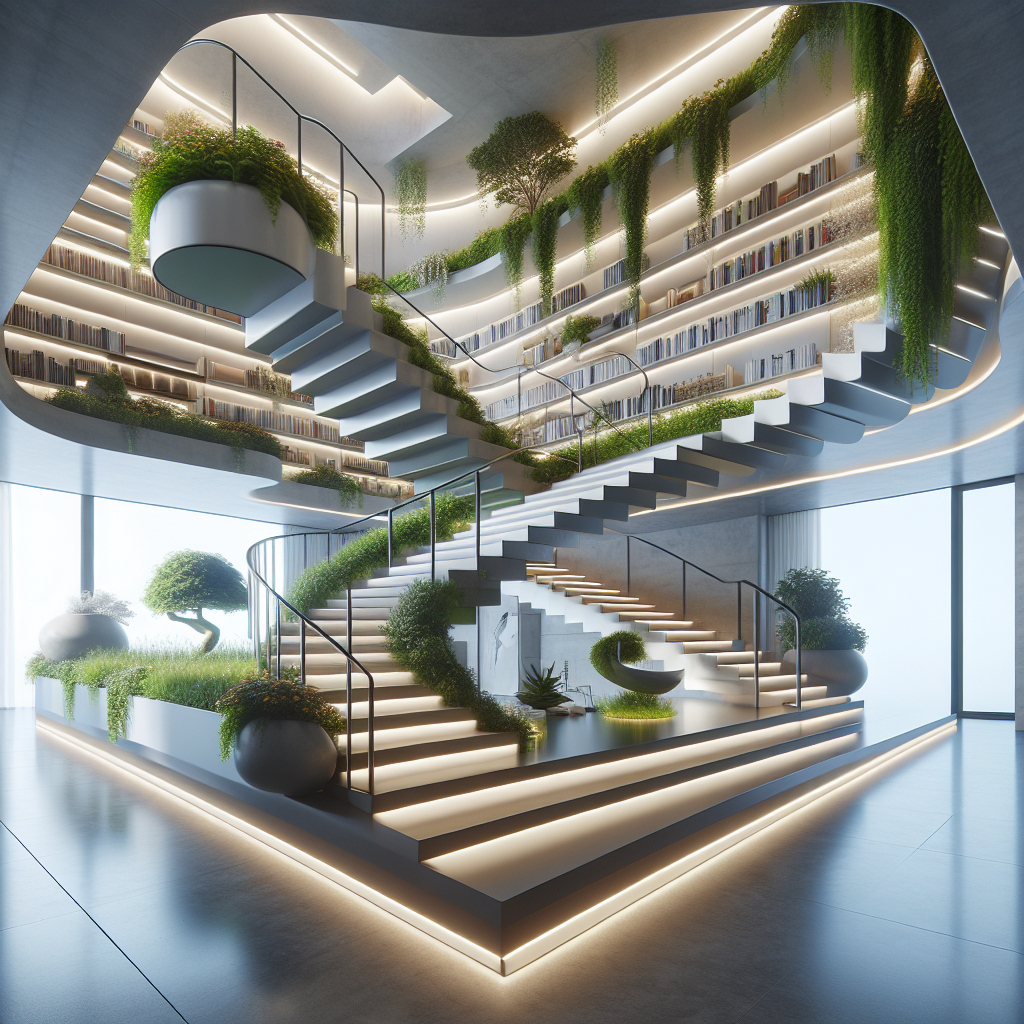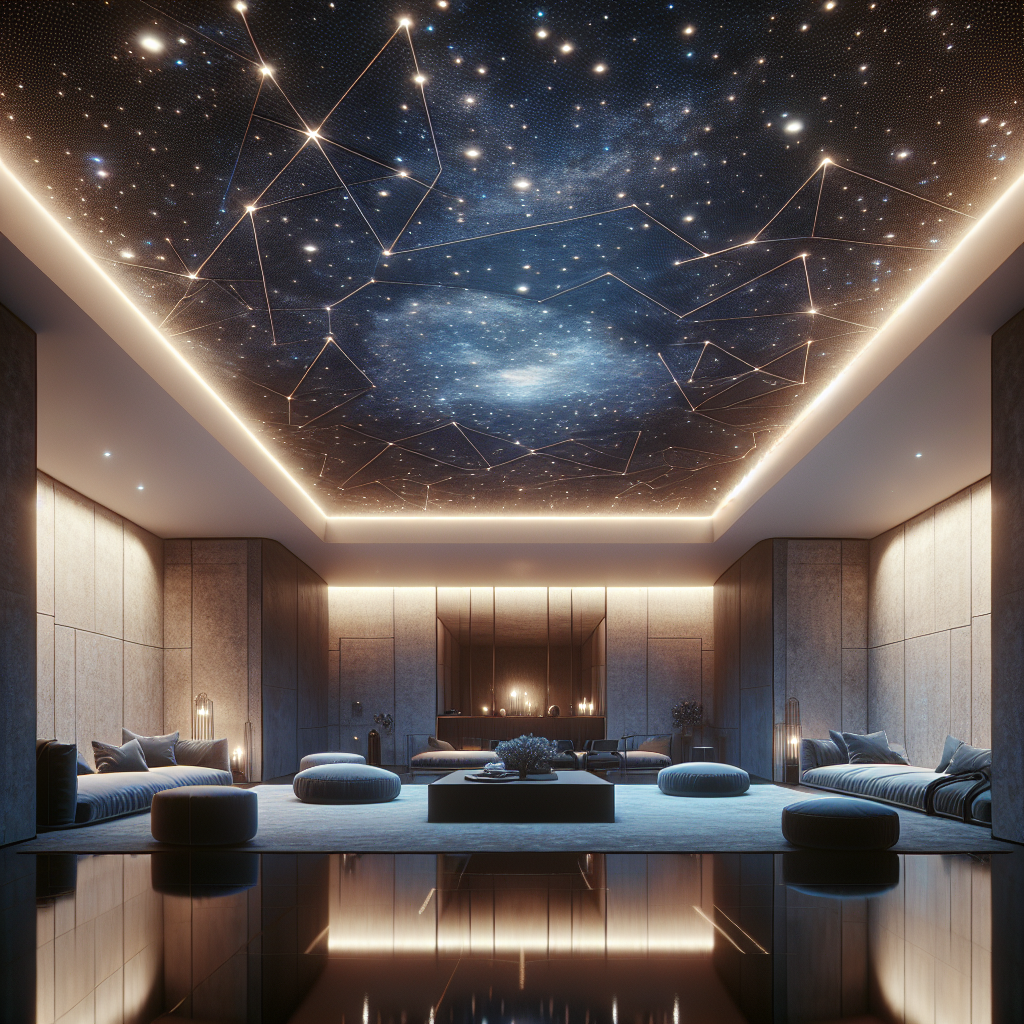Reimagining Staircase Design: More than a Functional Feature

Reimagining Staircase Design: Elevating the Art of Ascension
When we think of staircases, the mind often conjures images of utilitarian structures, designed primarily for connecting different levels of a building. Yet, as the pulse of modern architecture quickens, the humble staircase is undergoing a renaissance, transforming from a mere functional feature into a centerpiece of aesthetic and architectural innovation. The latest trends in staircase design are not only redefining spaces but also challenging our perceptions of what staircases can be.
The Staircase as a Sculptural Statement
Gone are the days when staircases were hidden away or simply blended into the background. Today’s designers are creating sculptural staircases that serve as focal points in residential and commercial spaces alike. These structures are often characterized by their dynamic forms and use of unconventional materials. For instance, a floating staircase, devoid of visible supports, can appear to defy gravity, lending a space a sense of weightlessness and intrigue. Such designs are not only a testament to engineering prowess but also a reflection of the aesthetic values of minimalism and negative space.
Innovative Materials and Textures
The material palette for staircases has expanded far beyond traditional wood and metal. Designers are experimenting with glass, acrylic, and even industrial materials like perforated steel to create unique tactile and visual experiences. These materials are not chosen solely for their looks; they are selected for their ability to interact with light and shadow, creating an ever-changing spectacle as the day progresses. The integration of LED lighting into staircases is another trend that is gaining traction, offering both functionality and an opportunity for ambiance setting.
Integrating Nature with Staircase Design
In an era where biophilic design is at the forefront, staircases are being reimagined as green oases within the home or office. Incorporating living plants into the staircase design, whether through planters integrated into the steps or vines trailing along the balustrade, brings a touch of nature indoors. This approach not only enhances the aesthetic appeal but also contributes to the well-being of the occupants by improving air quality and providing a connection to the natural world.
Staircases as Functional Art
The intersection of art and functionality is where staircase design truly shines. A staircase can double as a bookshelf, a display for art, or even a seating area, blurring the lines between different elements of interior design. The staircase becomes a canvas for personal expression, reflecting the unique tastes and lifestyle of the inhabitants. This multifunctional approach is particularly appealing in urban homes, where space is at a premium and every square inch counts.
Case Studies of Staircase Innovation
Notable examples of staircase innovation abound. The Tate Modern’s twisting, pyramidal staircase is as much a work of art as the exhibits it leads to. Similarly, the innovative staircase designs featured in recent architectural projects showcase the potential of staircases to become show-stopping features. From the sinuous forms of the Apple Park to the ethereal spiral of the architectural masterpieces found in historic cathedrals, these staircases are a testament to the power of thoughtful design.
Staircases in Sustainable Architecture
Sustainability is another key consideration in contemporary staircase design. Architects and designers are increasingly seeking out eco-friendly materials and construction methods that minimize environmental impact. The use of reclaimed wood, recycled metal, and low-VOC finishes are just a few examples of how staircases can contribute to a building’s green credentials. Moreover, the strategic placement of staircases can enhance natural ventilation and lighting, further reducing a building’s carbon footprint.
Conclusion: The Future of Staircase Design
As we look to the future, it’s clear that staircases will continue to evolve, driven by advances in technology, materials science, and a growing appreciation for design that marries form and function. The staircase is no longer just a means to an end but a journey in itself, offering a moment of reflection, beauty, and connection. Whether it’s the grand sweep of a helical staircase or the understated elegance of a cantilevered design, staircases will remain an essential, yet transformative, element of architectural design.
Embracing the New Era of Staircases
The era of staircases as mere functional constructs is behind us. Today, they stand as bold declarations of design intent, as integral to the narrative of a space as the walls that contain them. As we continue to push the boundaries of what’s possible, the staircase will undoubtedly ascend to new heights of creativity and innovation. It’s an exciting time for architects, designers, and homeowners alike, as we reimagine the role of the staircase in the modern built environment.
Further Reading and Inspiration
For those seeking further inspiration, a wealth of resources is available. Architectural digests and design magazines like FRAME and Interni offer in-depth analyses of cutting-edge staircase designs. Online platforms and social media channels are also rich with visual content, showcasing the latest projects from around the world. And for a historical perspective, the history of architecture provides a backdrop against which to appreciate the staircase’s evolution from a simple necessity to a complex art form.







